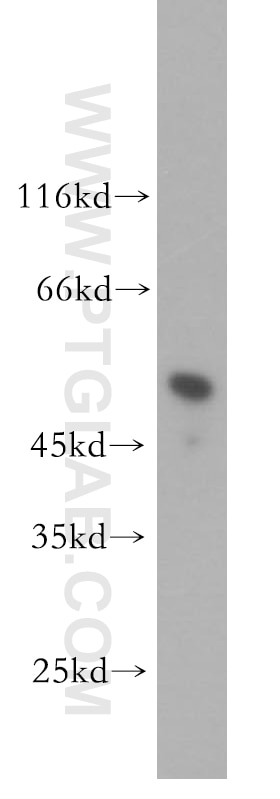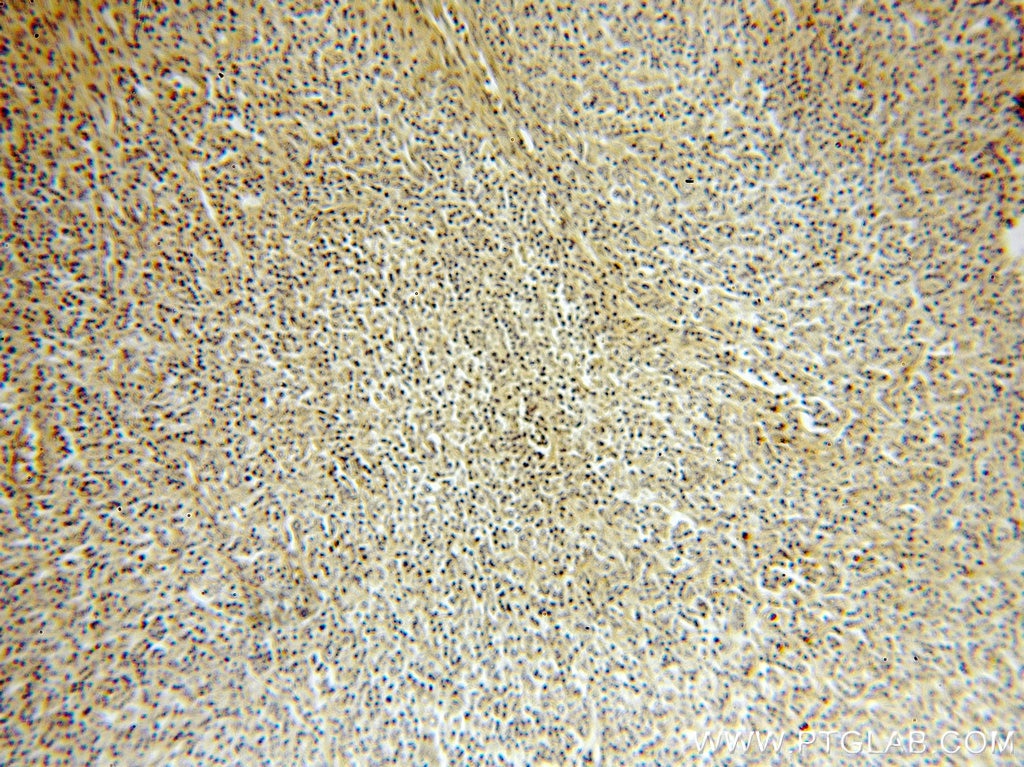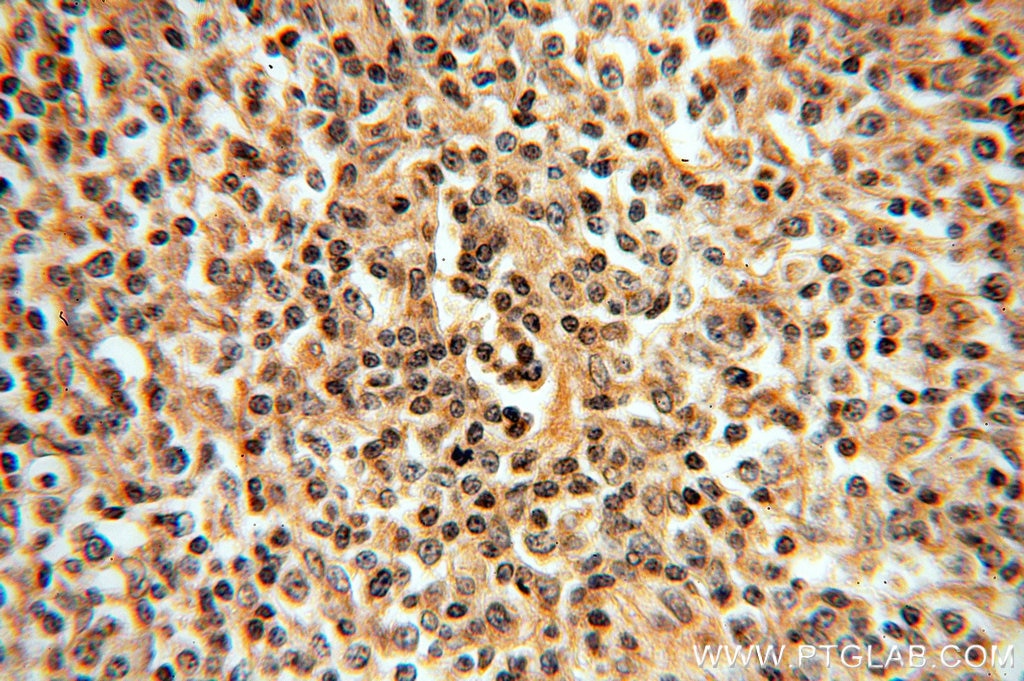Validation Data Gallery
Tested Applications
| Positive WB detected in | mouse spleen tissue |
| Positive IHC detected in | human lymphoma tissue Note: suggested antigen retrieval with TE buffer pH 9.0; (*) Alternatively, antigen retrieval may be performed with citrate buffer pH 6.0 |
Recommended dilution
| Application | Dilution |
|---|---|
| Western Blot (WB) | WB : 1:500-1:2000 |
| Immunohistochemistry (IHC) | IHC : 1:50-1:200 |
| It is recommended that this reagent should be titrated in each testing system to obtain optimal results. | |
| Sample-dependent, Check data in validation data gallery. | |
Published Applications
| WB | See 15 publications below |
| IHC | See 4 publications below |
| IF | See 3 publications below |
Product Information
18977-1-AP targets IRF8 in WB, IHC, IF, ELISA applications and shows reactivity with human, mouse, rat samples.
| Tested Reactivity | human, mouse, rat |
| Cited Reactivity | human, mouse, rat |
| Host / Isotype | Rabbit / IgG |
| Class | Polyclonal |
| Type | Antibody |
| Immunogen |
Peptide 相同性解析による交差性が予測される生物種 |
| Full Name | ICSBP1 |
| Calculated molecular weight | 48 kDa |
| Observed molecular weight | 48 kDa |
| GenBank accession number | NM_002163 |
| Gene Symbol | IRF8 |
| Gene ID (NCBI) | 3394 |
| RRID | AB_10596482 |
| Conjugate | Unconjugated |
| Form | |
| Form | Liquid |
| Purification Method | Antigen affinity purification |
| UNIPROT ID | Q02556 |
| Storage Buffer | PBS with 0.02% sodium azide and 50% glycerol{{ptg:BufferTemp}}7.3 |
| Storage Conditions | Store at -20°C. Stable for one year after shipment. Aliquoting is unnecessary for -20oC storage. |
Background Information
IRF8 also named as ICSBP1, is a transcription factor of the IFN regulatory factor (IRF) family. The IRF family proteins bind to the IFN-stimulated response element (ISRE) and regulate expression of genes stimulated by type I IFNs, namely IFN-alpha and IFN-beta. IRF family proteins also control expression of IFN-alpha and IFN-beta-regulated genes that are induced by viral infection. IRF8 specifically binds to the upstream regulatory region of type I IFN and IFN-inducible MHC class I genes (the IFN consensus sequence (ICS)). It plays a negative regulatory role in cells of the immune system. It is predominantly in lymphoid tissues.
Protocols
| Product Specific Protocols | |
|---|---|
| IHC protocol for IRF8 antibody 18977-1-AP | Download protocol |
| WB protocol for IRF8 antibody 18977-1-AP | Download protocol |
| Standard Protocols | |
|---|---|
| Click here to view our Standard Protocols |
Publications
| Species | Application | Title |
|---|---|---|
J Autoimmun TIGIT-Fc fusion protein alleviates murine lupus nephritis through the regulation of SPI-B-PAX5-XBP1 axis-mediated B-cell differentiation | ||
Mater Sci Eng C Mater Biol Appl The unique regulation of implant surface nanostructure on macrophages M1 polarization. | ||
Transl Lung Cancer Res Cross-talk of pyroptosis and tumor immune landscape in lung adenocarcinoma. | ||
J Inflamm Res An Experimental Animal Study: Electroacupuncture Facilitates Antiviral Immunity Against Hepatitis B Virus Through the IFN-γ/JAK/STAT Axis | ||
Life Sci Berberine regulates macrophage polarization through IL-4-STAT6 signaling pathway in Helicobacter pylori-induced chronic atrophic gastritis. | ||
Life Sci Mechanism of berberine in treating Helicobacter pylori induced chronic atrophic gastritis through IRF8-IFN-γ signaling axis suppressing. |



